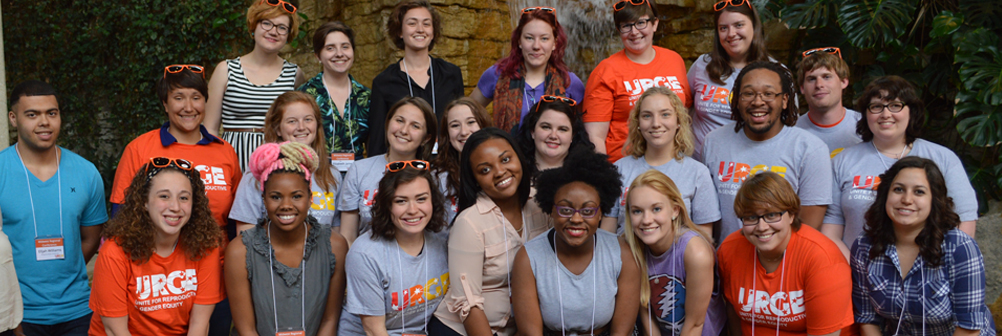Forced Sterilizations, and the RJ Struggle of the Latinx Community in California
Posted by Guest Blogger
October 15, 2020

By: Kirsten Hernandez
It’s no secret that Black, Asian, Indigenous, and Latinx people throughout American history have struggled harder than others to gain autonomy over their bodies. What was a secret, however, was the lengths to which many states went to ensure these people were stripped of their rights.
Eugenics is a dirty word, as it should be. Modern eugenics came about in the early 20th century and was used to justify horrific acts of racism across the globe. The most prominent example, of course, was the holocaust, in which the Nazi party attempted to justify their human rights abuses by claiming that there was a biological imbalance between the aryan race and the other ethnic groups they demonized. The US fought a war, rightfully claiming that such programs were immoral enough to fight to the death to end. We took the victory of World War II to tout ourselves as being leaders in the field of human rights, and the global standard barrier for supposed moral superiority.
The problem that’s often overlooked, however, that the architects of the Nazi eugenics program claimed at the Nuremberg trials that they had based their structure on the various sterilization laws in the United States.
The sterilization programs targeting specifically American Latinas began in the early 20th century and officially spanned until the 70s. One of the biggest programs that existed was the Puerto Rican sterilization program, beginning in the pre-WWII ’30s. Using unemployment and poverty as justification for their actions, “La Operación” was carried out and nearly 1/3rd of the colony’s female population was sterilized in an effort to reduce racial minorities and the disabled population. The first so-called clinical trials were held on the island as well, with the team of white male scientists claiming, “if these women can follow the Pill regimen, then every woman in the world could!” The subjects of this trial weren’t even told that the pill was in trial phases, or that the researchers were heavily monopolizing on their sale of the test medications.
On the mainland, the sterilization tactics of Latinas (specifically poor immigrants without much knowledge of English) had begun even earlier. In 1909, California, a state with one of the highest percentages of Mexican immigrants, quietly passed a law allowing for the sterilization of “mentally incapacitated” people. Latinas were often tricked or forced into being institutionalized at mental hospitals where hysterectomies were performed against their will, and often without even so much as their knowledge. Some women were even approached at the late stages of labor to sign off on hysterectomy “consent” papers. At the peak of the program in the early 30s, Latinas on average made up 142 of every 1000 people sterilized, over double the numbers of the next biggest group (Latino men).
It wasn’t until the federal lawsuit Madrigal v. Quilligan in 1978 that this program even became public knowledge. The suit was filed by Chicana lawyer Antonia Hernandez on behalf of 10 working-class women, none of them fluent in English, who were sterilized with coercion or without their knowledge at Los Angeles County Hospital. The women in the case reported many atrocities, including the threat of being cut off from social services if they didn’t agree to the procedure, and that many doctors were “eugenics minded”. While many changes were made as a result of this case, including a sterilization waiting period and mandated translation of procedure information, the judge nonetheless ruled in the favor of the hospitals that had violated these women.
The program ended in the 70s, but the legacy of these programs still weighs heavily on the Latinx communities in California, and throughout the country. In total, over 20,000 child-bearing people were sterilized and reinforced, at least within the court of law, the white-supremacist idea that we can’t and shouldn’t be in charge of ourselves and our families. Many public figures, most of which weren’t involved in the law, came out to apologize, from the Governor of California to the directors of the hospitals involved. When there was finally a bill in the statehouse that would provide compensation to the surviving victims of the atrocity, however, the bill died in committee without even so much as a vote.
The deep-rooted irony of America’s virtue signaling for human rights causes is something that’s never been lost to the people of color who live here. As much as many politicians and everyday people are afraid to see it, the same sentiments still exist around the Latinx community and their families. Whether it’s the forced sterilizations that still go on in ICE facilities or the repeated racist notions of “anchor babies”, eugenicist ideals are still very much alive and well in this county.
While there are some significant differences between the white and Latinx feminist circle views on reproductive rights (the most notable – required waiting periods for abortions and sterilization) we should all be able to agree on one thing: the fact that reproductive justice for our community is long past overdue. Healthcare for most in this country is out of reach, and the trauma surrounding the country’s history of eugenics and white supremacy makes seeking medical treatment for many an untrustworthy experience for even those with that access. Over the counter birth control is a way of granting us the freedom of choice, a freedom that was taken from so many of our grandmothers only a few decades ago. We don’t need more performative press conference apologies from talking heads, we need action.
It’s literally the least we can do.
Leave a Reply
You must be logged in to post a comment.

